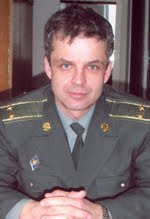- 16 July to 30 October 1942.
- 19 February to 13 March 1943.
- 27 August to 15 September 1943.

Posted by Oleg Bezverkhnii at 20:26 0 comments
Labels: Adolf Hitler, Headquarters Werwolf, museum, Ukraine, Vinnitsa, WWII
Posted by Oleg Bezverkhnii at 22:22 0 comments
Posted by Oleg Bezverkhnii at 16:51 0 comments
Posted by Oleg Bezverkhnii at 08:13 0 comments
Posted by Oleg Bezverkhnii at 17:46 0 comments
Posted by Oleg Bezverkhnii at 22:22 0 comments
Labels: Augustus II the Strong, Charles XII, Great Northern war, Holy Roman Empire, Leipzig, Markranstädt, Peter I, Poland, Russia, Saxony, Stora Nordiska Kriget, Sweden, treaty of Altranstädt
Posted by Oleg Bezverkhnii at 15:16 0 comments
Posted by Oleg Bezverkhnii at 23:36 0 comments
Posted by Oleg Bezverkhnii at 08:14 0 comments
Posted by Oleg Bezverkhnii at 09:32 0 comments
Labels: Air Force, Aviation, President Putin, Russia, Russian Army, Zhukovsky
Posted by Oleg Bezverkhnii at 09:40 0 comments
Labels: Albrecht Wenzel Eusebius von Wallenstein, Battle of Lützen, Gustavus Adolphus of Sweden, Swedish stone, Thirty Year’s War
Posted by Oleg Bezverkhnii at 10:23 1 comments
Posted by Oleg Bezverkhnii at 16:53 0 comments
Labels: export and import of military and special products and services, Kazakhstan, Thailand, Ukrainian armored personnel carrier BTR ZE, UkrSpetsExport
Posted by Oleg Bezverkhnii at 21:54 0 comments
Labels: military exercise, Minister of Defense of Ukraine, Quater, Ukraine, United Arab Emirates
Posted by Oleg Bezverkhnii at 12:39 0 comments
Posted by Oleg Bezverkhnii at 18:06 0 comments
Posted by Oleg Bezverkhnii at 08:58 0 comments
Labels: Ivan Mazepa, National Museum of the History of Ukraine, Stefen Gullgren, Sweden’s State Trophy Collection, Swedish Ambassador, Ukraine
Posted by Oleg Bezverkhnii at 08:52 0 comments
Labels: NATO, parliamentary elections, Ukraine
Posted by Oleg Bezverkhnii at 07:02 0 comments
Posted by Oleg Bezverkhnii at 06:49 0 comments
Labels: Jimmy Wales, Ukraine, Victor Pinchuk, Wikipedia
Posted by Oleg Bezverkhnii at 16:03 0 comments

Posted by Oleg Bezverkhnii at 22:56 0 comments
Labels: International Worker's Day, May Day, Soviet Union, Ukraine
Posted by Oleg Bezverkhnii at 08:45 0 comments
Labels: Collective Security Treaty Organization, missile shield in Europe, NATO, Russia, Ukraine
The city of Poltava and its surroundings were an area of fierce combat actions in 1943. Many decades had passed since that time but even now a bucket of excavator or tractor plough digs out such a reminder of the past war shown on the photo below. This 76-mm shell was found a few days ago not far from Poltava. Many 76 mm divisional guns M1942 (ZIS-3) were used during the liberation of Poltava in September 1943. To collect and defuse a numerous shells and bombs all regional centres of Ukraine have special military units manned by qualified sappers and equipped with the most appropriate technical means. The same day a very dangerous find was detonated in a controlled explosion.
Posted by Oleg Bezverkhnii at 10:17 0 comments

Posted by Oleg Bezverkhnii at 22:02 0 comments
Labels: Russia, S-400s, surface-to-air missile
KYIV March 20, 2012 (Ukrinform) Ukraine's state-controlled arms exporter, hopes to expand the supply of the new main battle tanks Oplot, Ukrspecexport acting director general Vadym Kozhevnikov told reporters at a training ground in the town of Honcharivske, Chernihiv region, where the combat vehicle was demonstrated to a Thai delegation, currently on a visit to Ukraine. The contract worth USD 250 million for the supply of the Oplot tanks to Thailand was signed September 1, 2011; 49 tanks and two BREM trucks are expected to be delivered to Thailand.
Read more about the Oplot tank at http://sv.wikipedia.org/wiki/T-84
Posted by Oleg Bezverkhnii at 17:11 0 comments
Labels: arms export, T-84, tank, Thailand, Ukraine
 February 2, 2012 (Worldwide News Ukraine) Ukraine’s capital hosted this week an impressive attraction, the International Reenactment Festival On the Armor of Victory on illuminating the economic, industrial, and scientific distinctions of World War II.
February 2, 2012 (Worldwide News Ukraine) Ukraine’s capital hosted this week an impressive attraction, the International Reenactment Festival On the Armor of Victory on illuminating the economic, industrial, and scientific distinctions of World War II.Posted by Oleg Bezverkhnii at 10:23 0 comments
Labels: Kyiv, Red Army, Ukraine, World War II
When I read this article, I thought of thanking God for two daughters I have...

Posted by Oleg Bezverkhnii at 18:20 0 comments